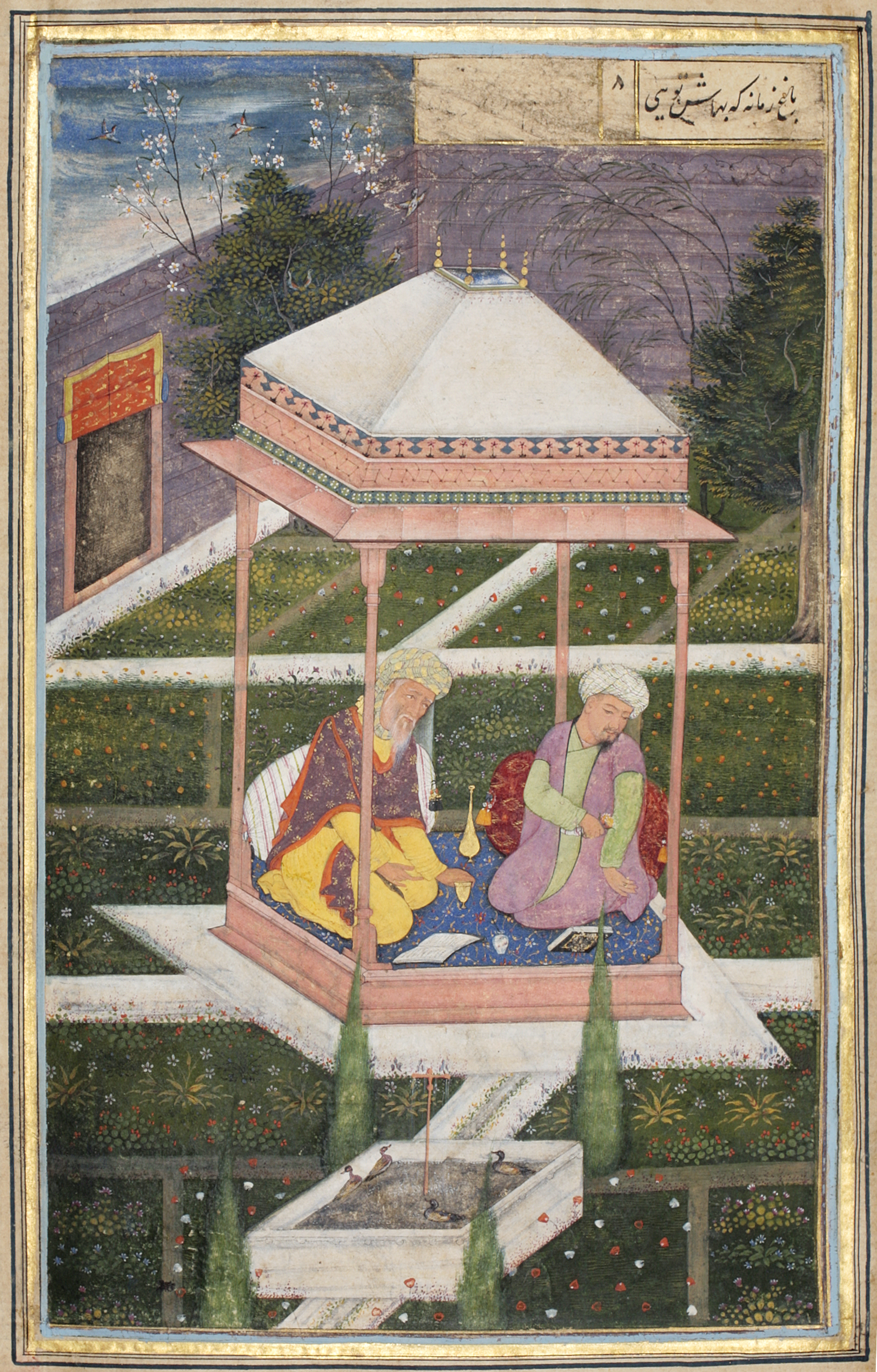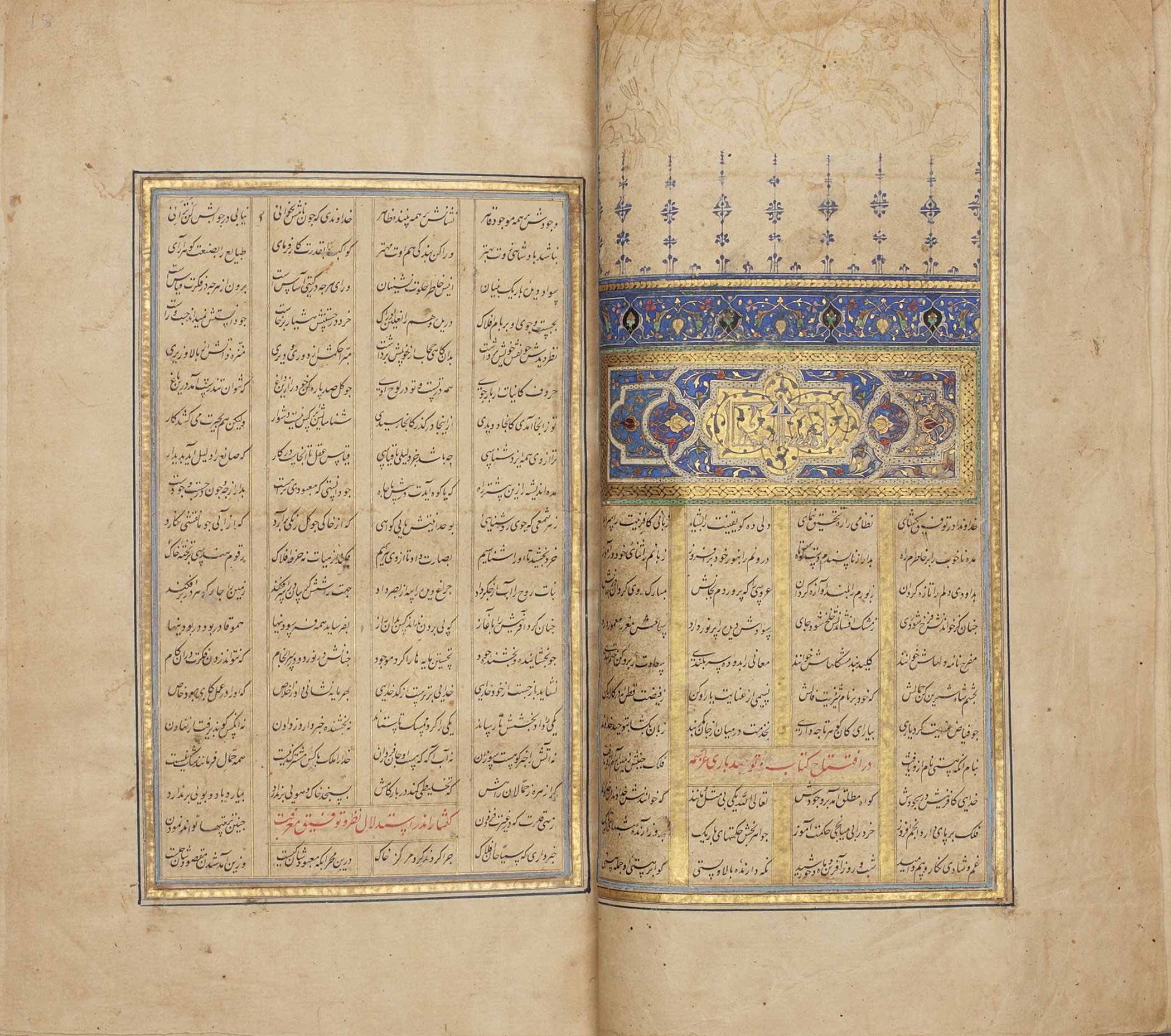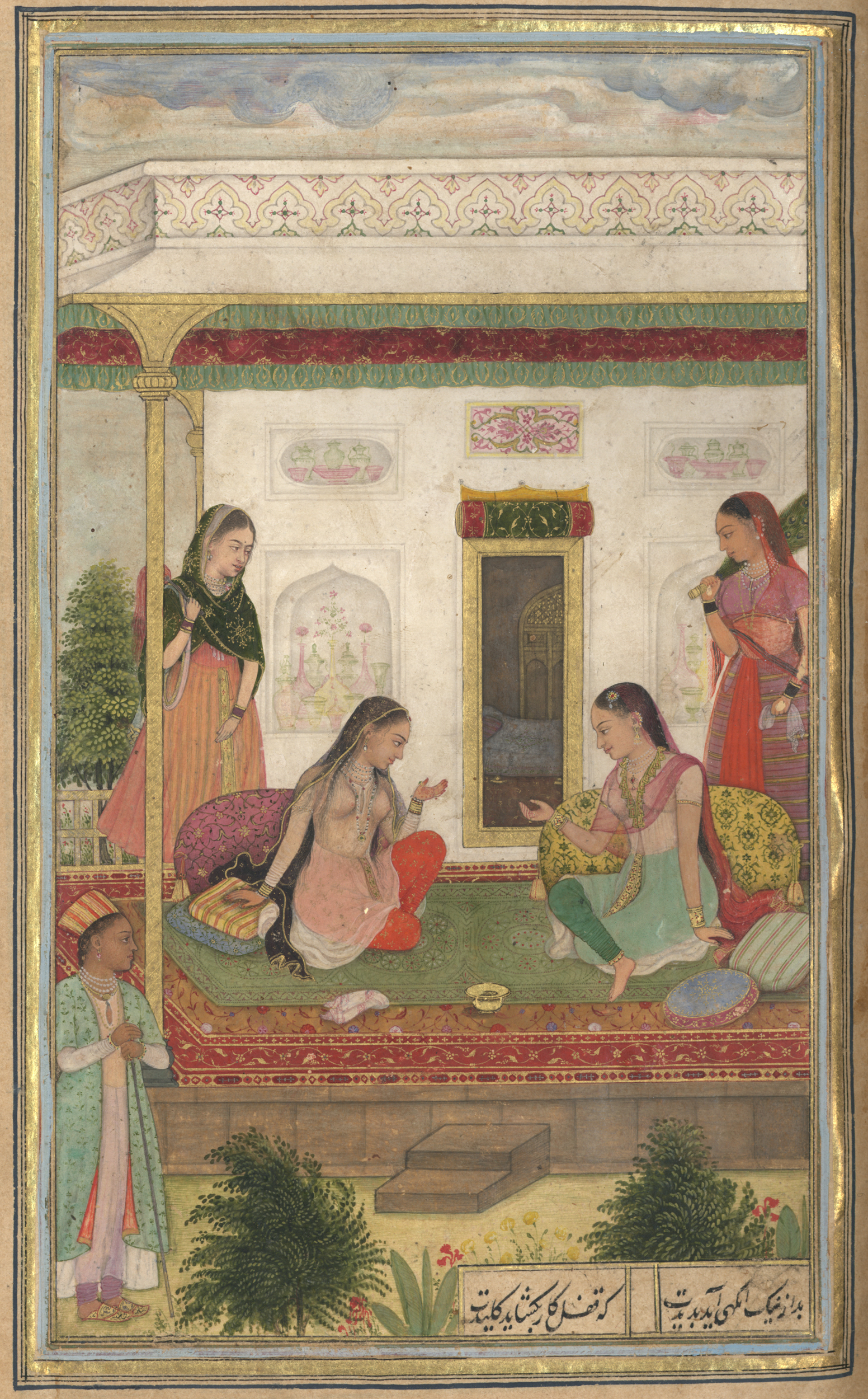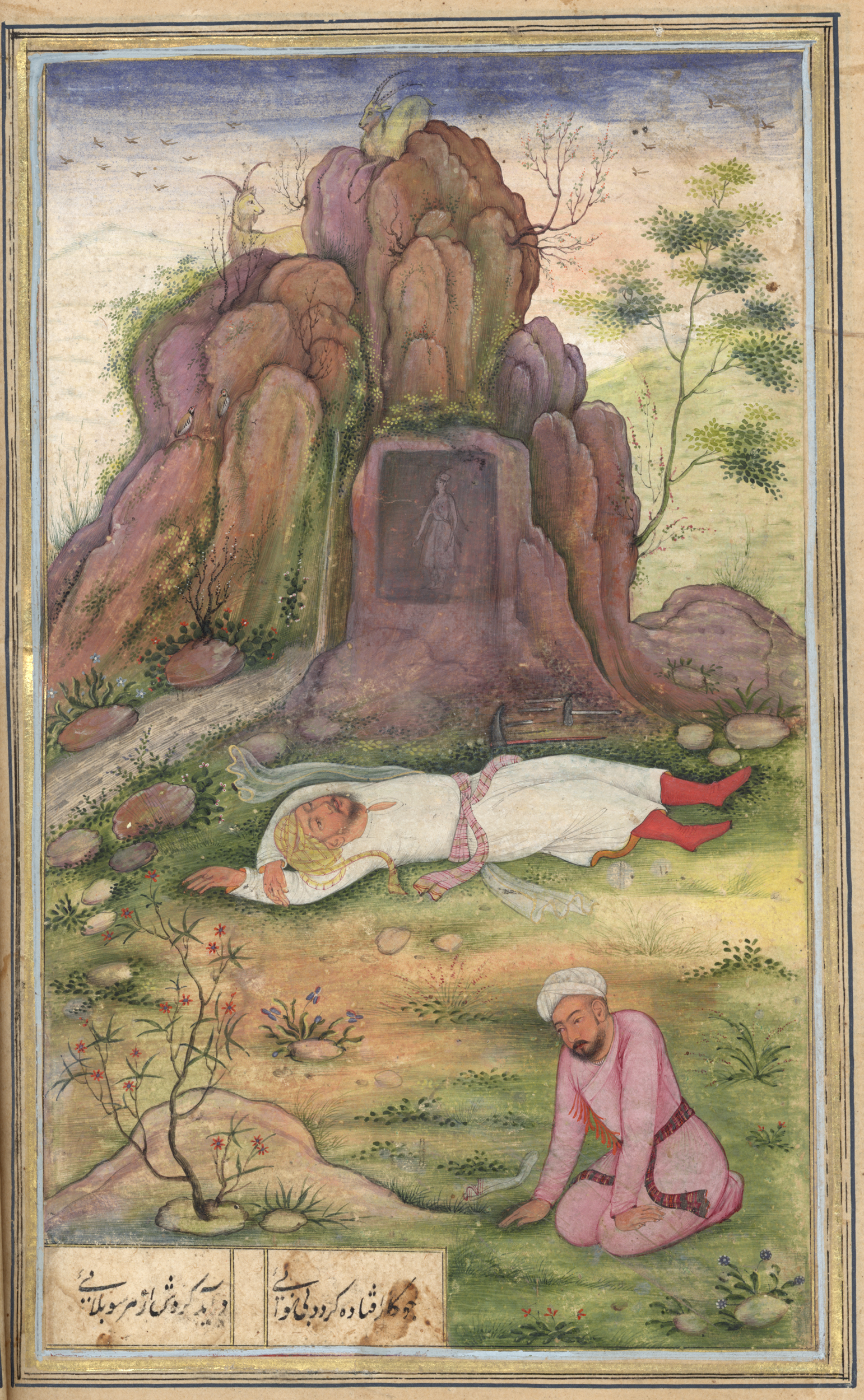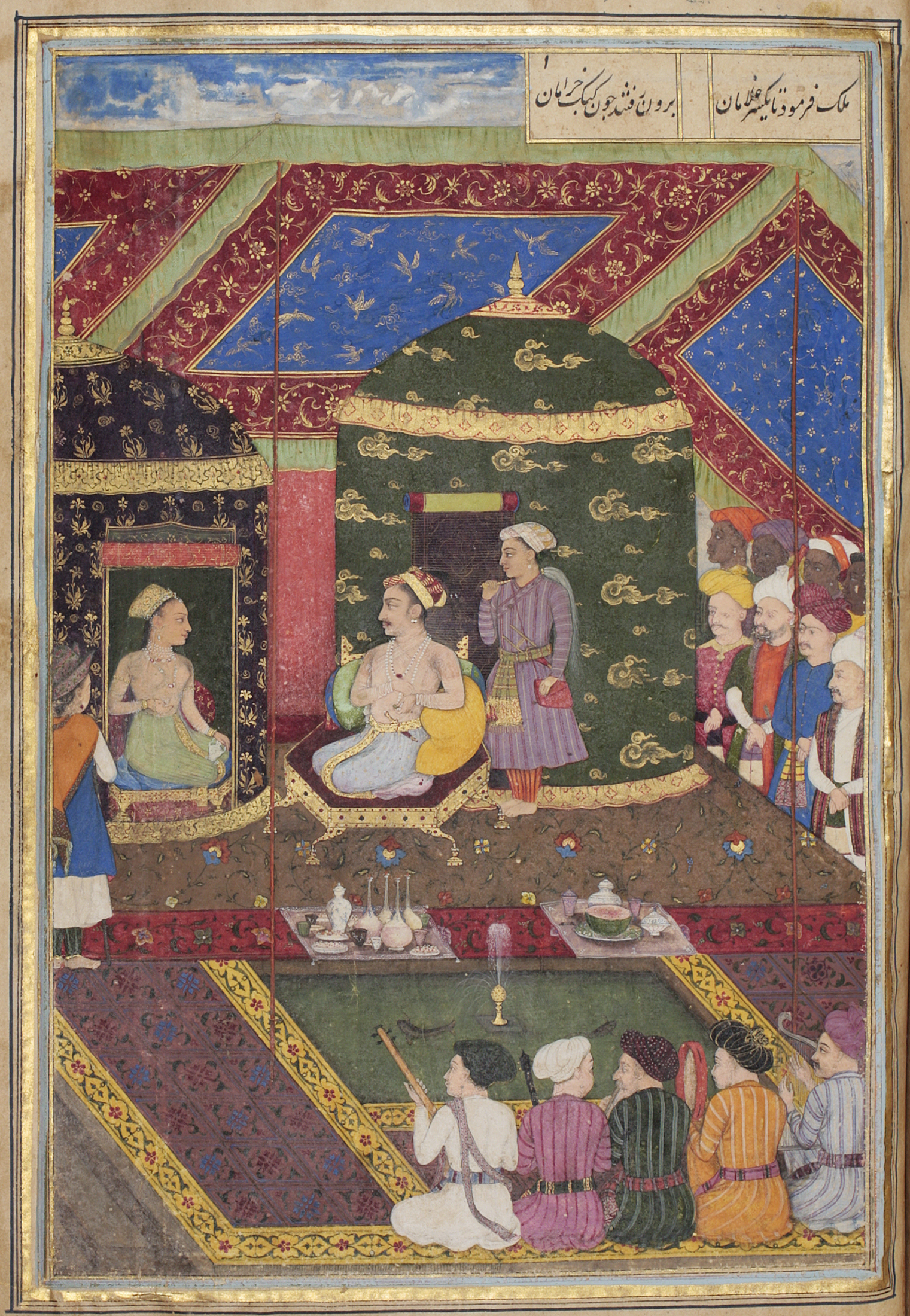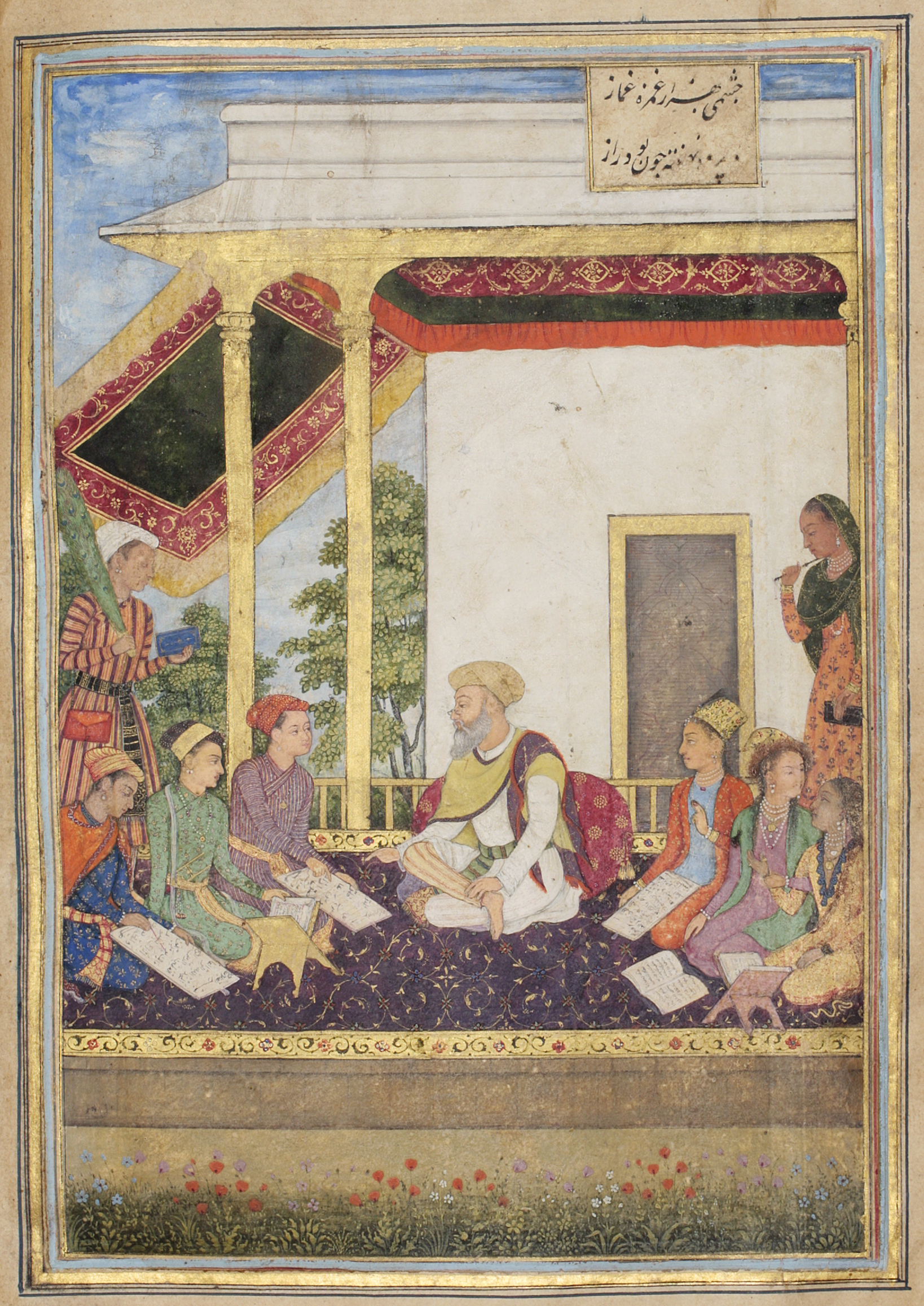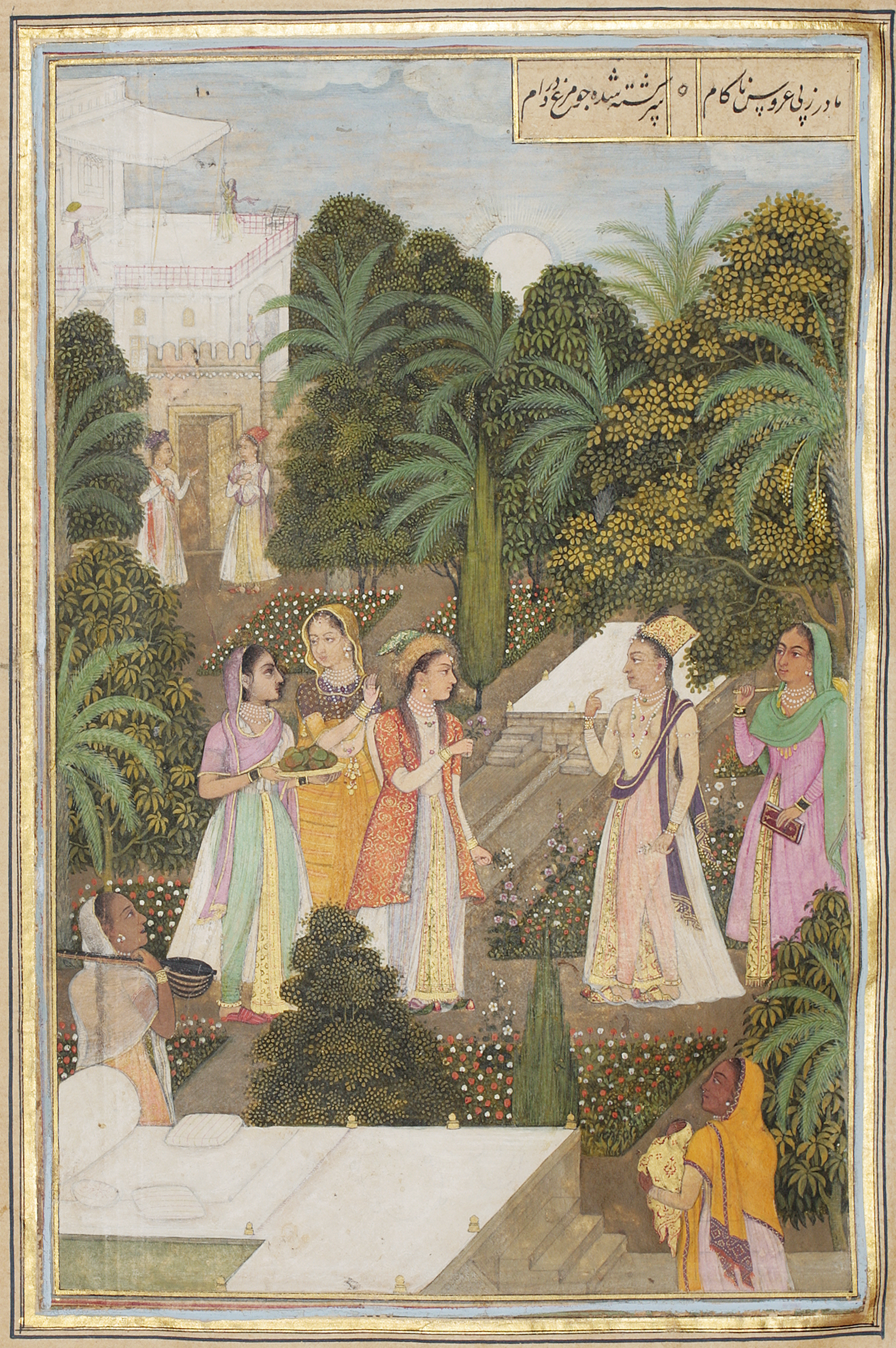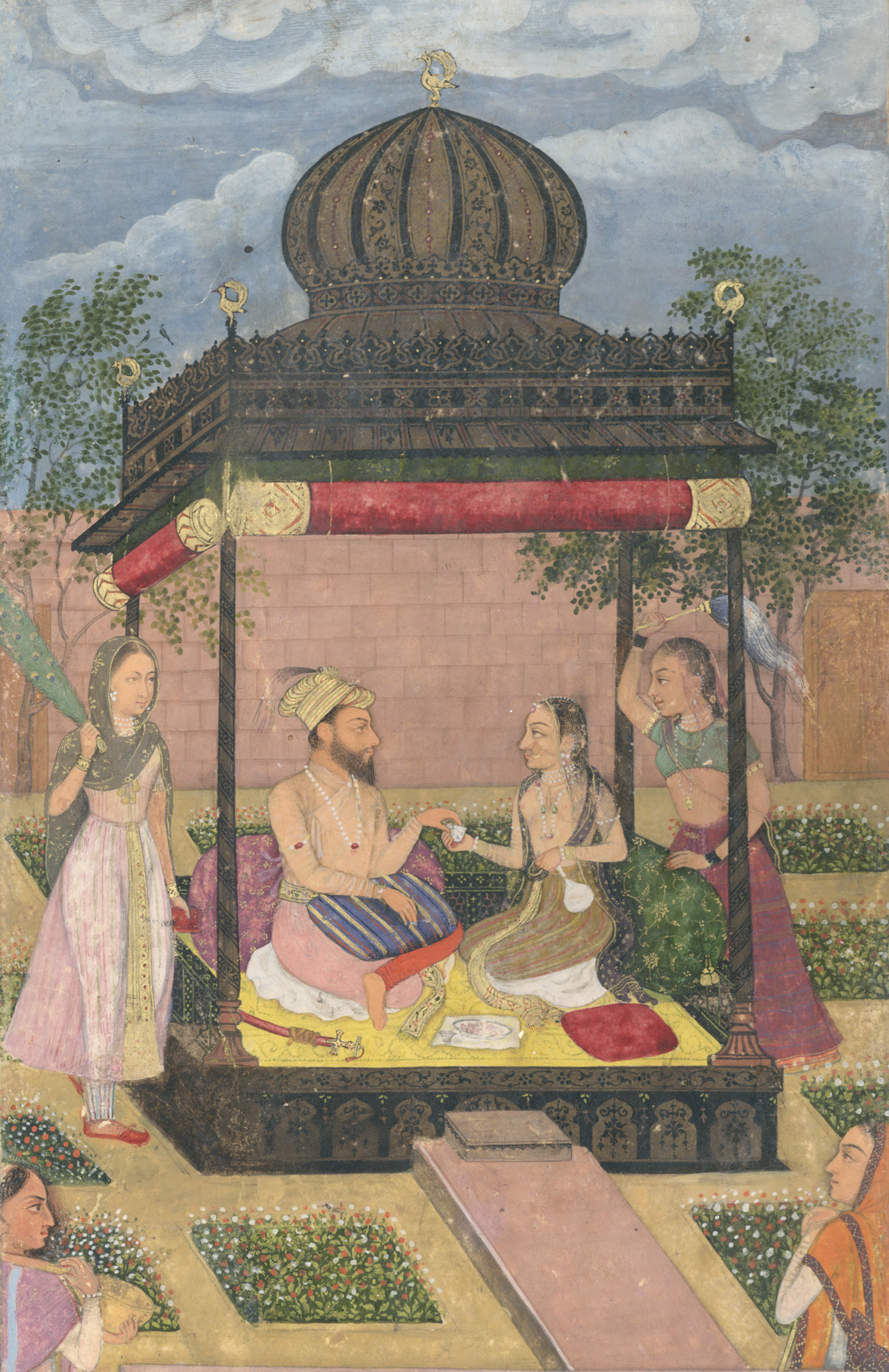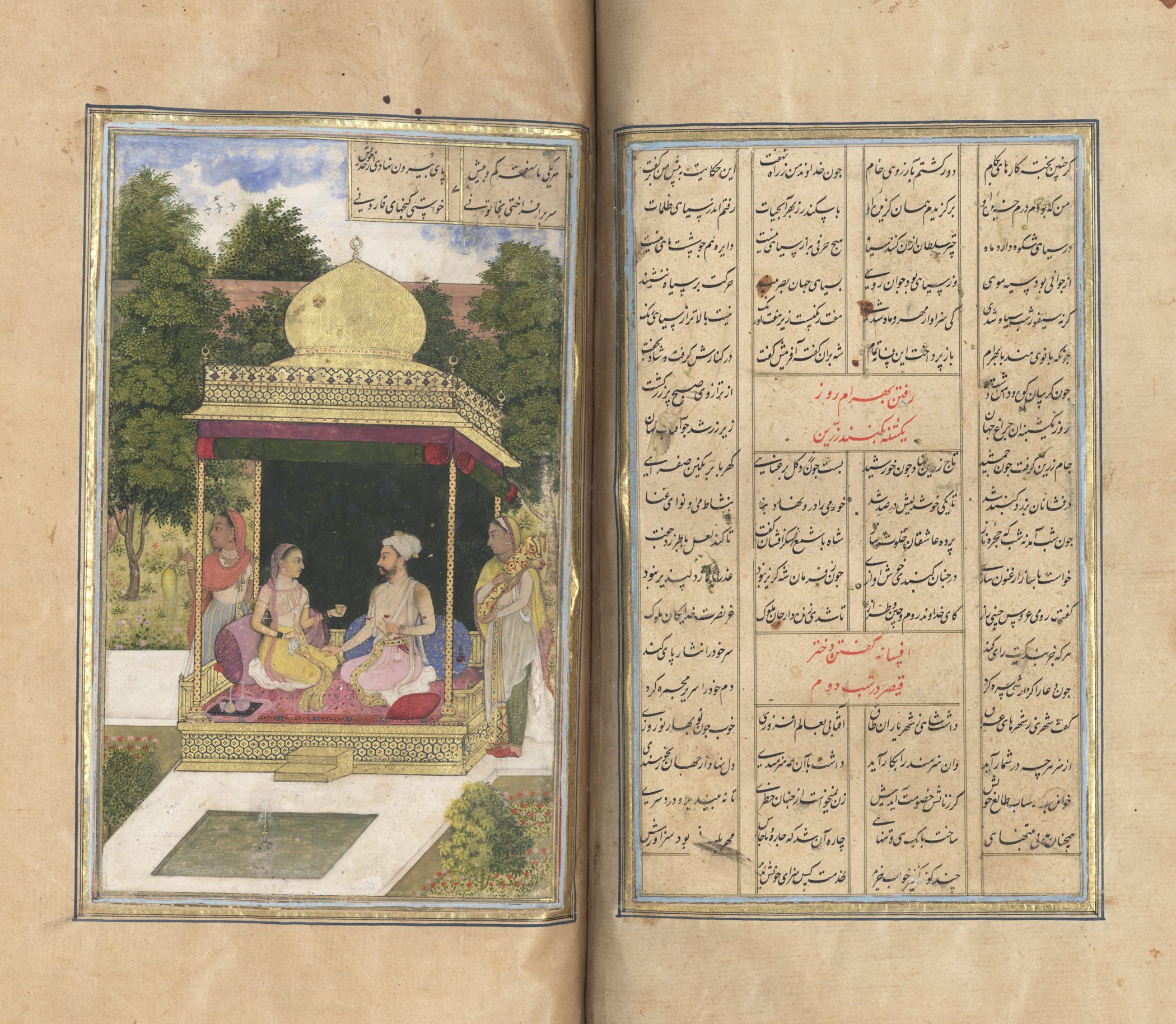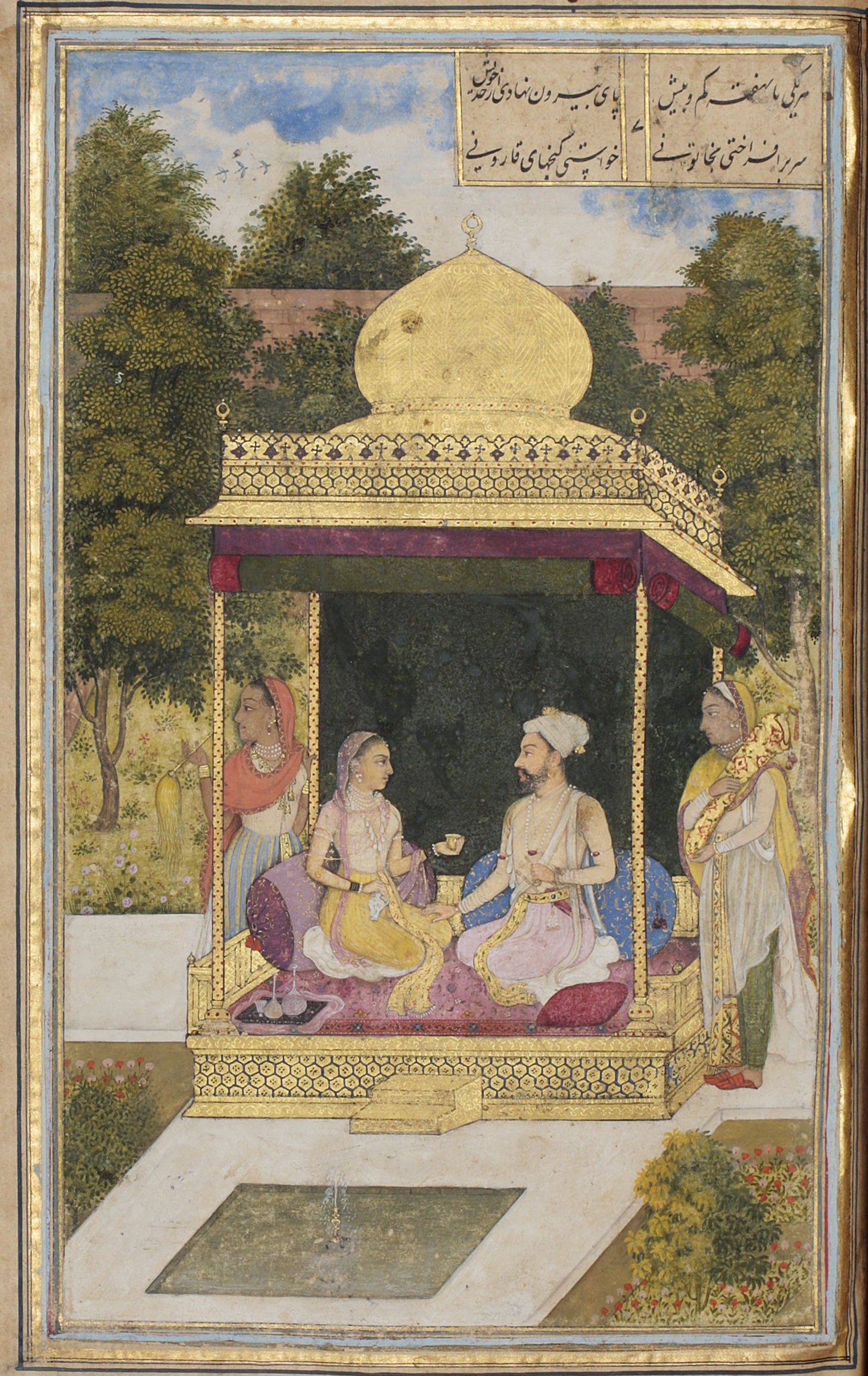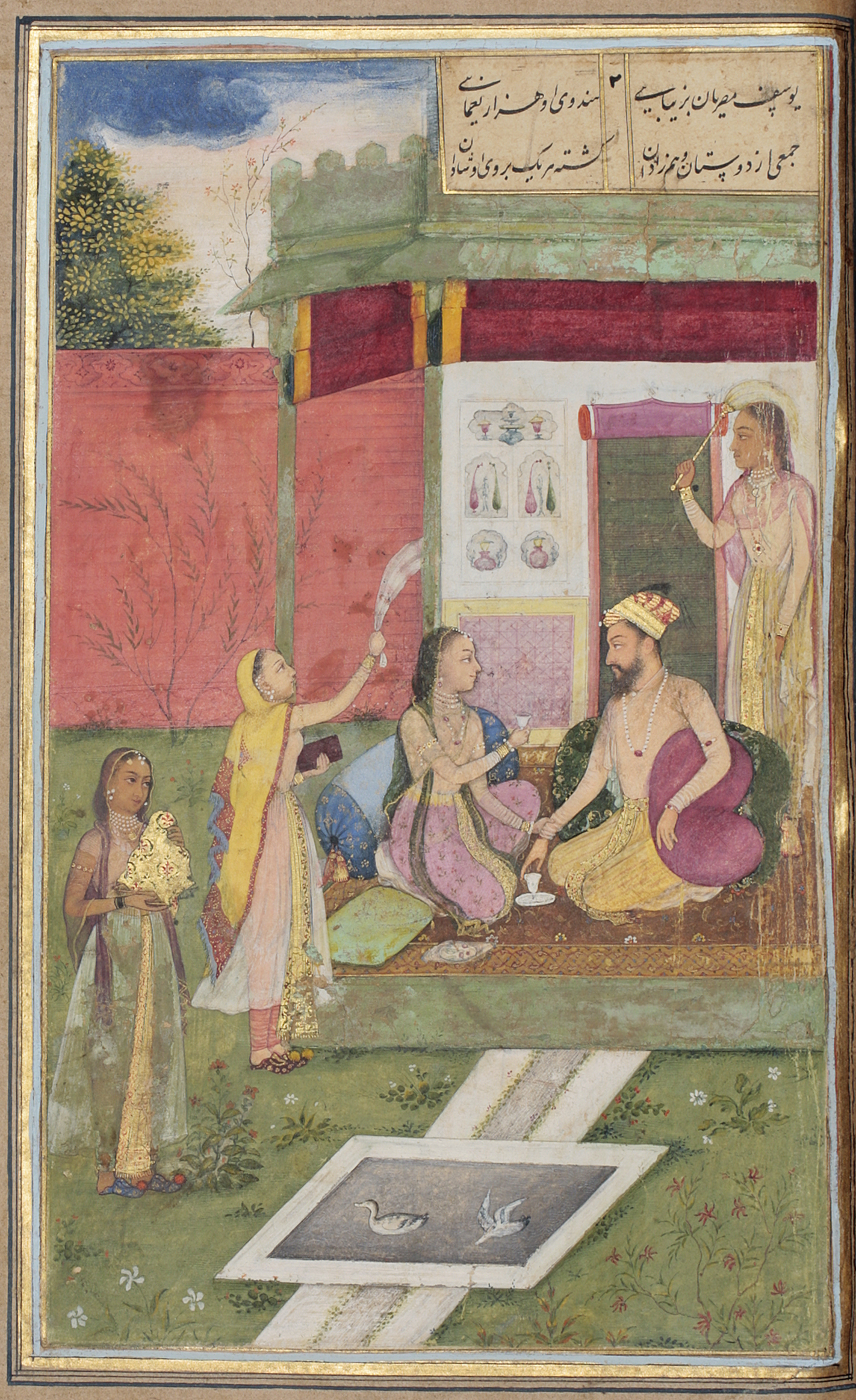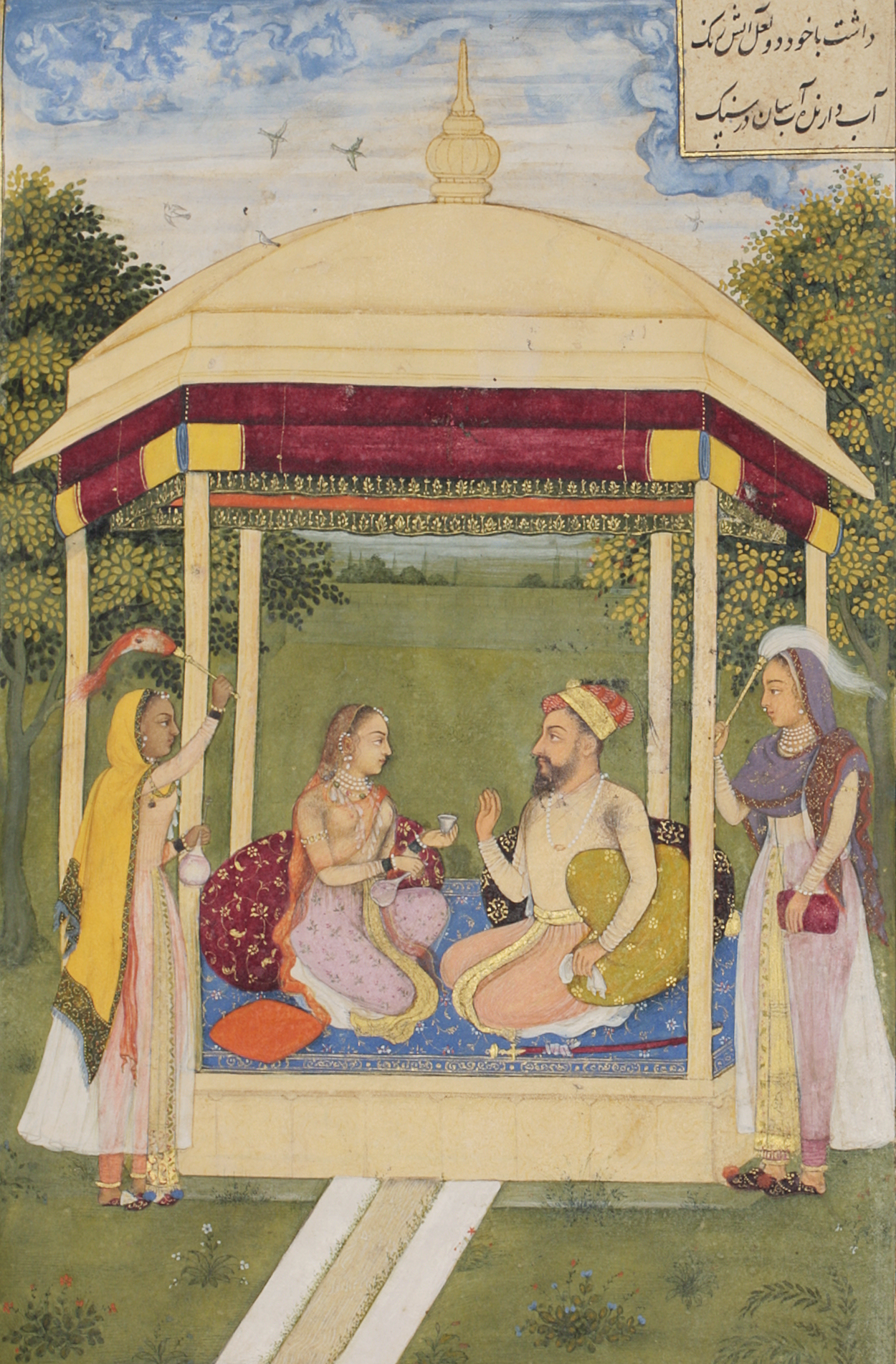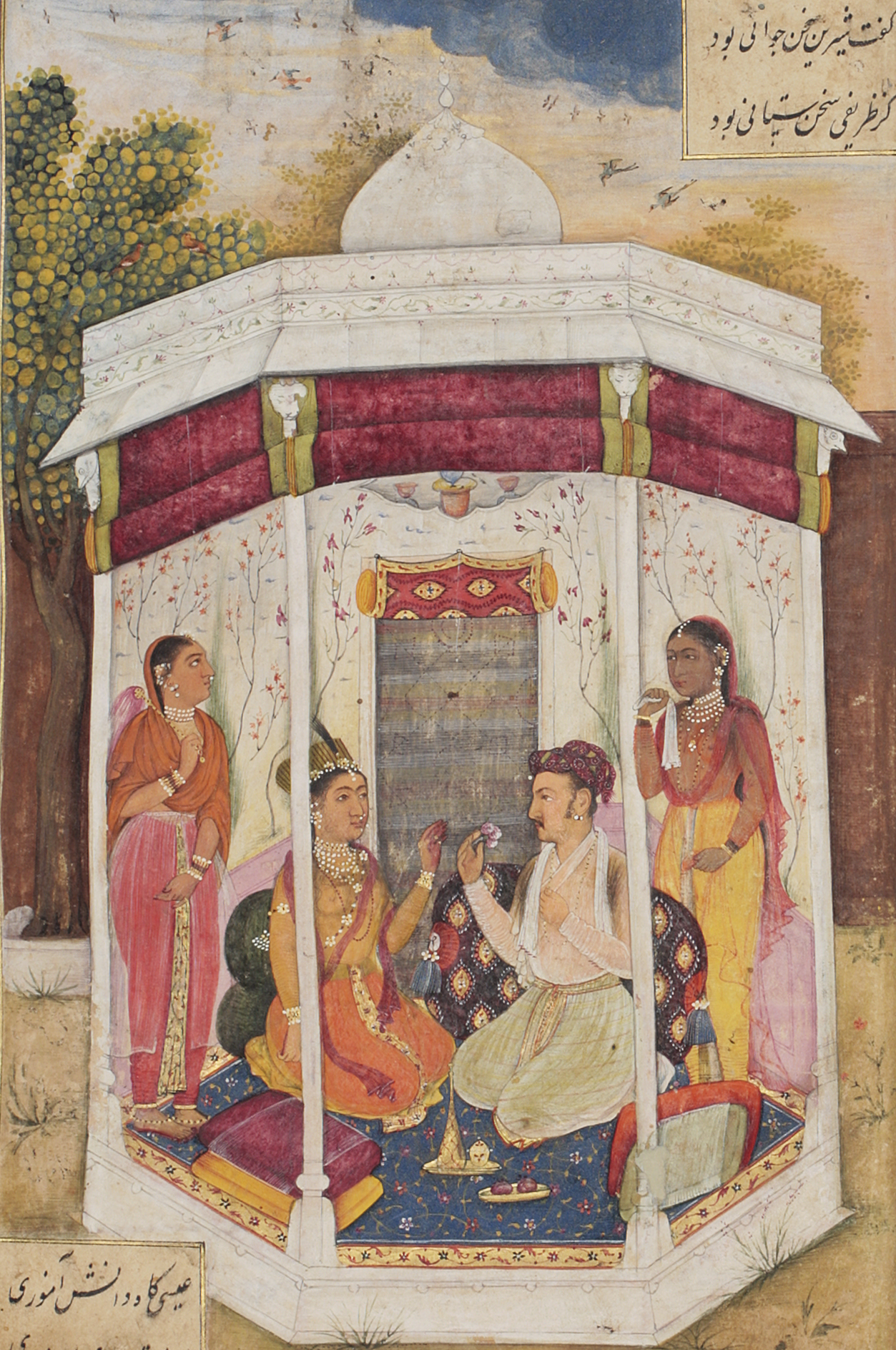A Khamsah of Nizami for Prince Awrangzeb
Location: possibly Iran (text); Mughal India (illustrations)
Materials: ink, gold and opaque watercolour on paper; modern binding
Dimensions: 275 folios; 26.5 x 16.5cm; 24 full-page miniatures, 17.1 x 9.9cm (average)
Accession Number: MSS 1023
Other Notes:
The appearance of the text and the style of the illumination in this copy of the Khamsah (‘Quintet’) of Nizami strongly suggest a 15th-century Iranian origin for the volume. However, it has been suggested – based on the name of the scribe, Yusuf al-Kashmiri – that the text may possibly have been copied in India in the early 17th century. The 24 illustrations, on the other hand are clearly Mughal in style.
Although the volume lacks an explicit dedication to Awrangzeb (folios are missing at the beginning and end of the manuscript), four of the illustrations to the Haft paykar (the Seven Princesses in their pavilions and the tales they tell) depict Awrangzeb in the guise of its hero, Bahram Gur. In later life Awrangzeb became known for his austerity, but in his youth he shared the tastes of other Mughal princes for illustrated romances.
The miniatures
- Folio 4a Anushirvan’s minister repeats the owls’ speech to the king
- Folio 9a Two rival physicians duel with poisons [see illustration]
- Folio 28b Shirin admires Khusraw’s portrait
- Folio 33b Khusraw sees Shirin bathing
- Folio 37b Shapur gives Khusraw news of Shirin
- Folio 50a Shirin sits with a confidante in a garden pavilion [see illustration]
- Folio 57a Farhad sculpting an image of Shirin on Mount Behistun
- Folio 63b The suicide of Farhad [see illustration]
- Folio 82a Khusraw and Shirin meet [see illustration]
- Folio 89a The union of Khusraw and Shirin
- Folio 114b Layla and Majnun at school [see illustration]
- Folio 121a Layla and her companions in a garden [see illustration]
- Folio 126a The battle of the clans
- Folio 136a Majnun in the wilderness
- Folio 153a Layla visiting Majnun in the wilderness
- Folio 173b Bahram Gur slaying a dragon
- Folio 184a Bahram Gur fighting the Emperor of China
- Folio 188a Bahram Gur in the Black Pavilion, with Bahram Gur depicted as Awrangzeb [see illustration]
- Folio 195a Bahram Gur in the Gold Pavilion, with Bahram Gur depicted as Awrangzeb [see illustration]
- Folio 198b Bahram Gur in the Green Pavilion, with Bahram Gur depicted as Akbar
- Folio 202b Bahram Gur in the Red Pavilion
- Folio 206a Bahram Gur in the Blue Pavilion, with Bahram Gur depicted as Awrangzeb [see illustration]
- Folio 212b Bahram Gur in the Sandalwood Pavilion, with Bahram Gur depicted as Awrangzeb [see illustration]
- Folio 217b Bahram Gur in the White Pavilion, with Bahram Gur depicted as the young Jahangir [see illustration]
Script:
text copied in nasta‘liq, with 20 lines to the page arranged in 4 columns
Bibliography:
L. York Leach, Paintings from India, The Nasser D. Khalili Collection of Islamic Art, volume VIII, London 1998, cat.30, pp.96–109.
J.M. Rogers, The Arts of Islam. Masterpieces from the Khalili Collection, London 2010, cat.328, p.280.













 Print Page
Print Page
 Print Page
Print Page
